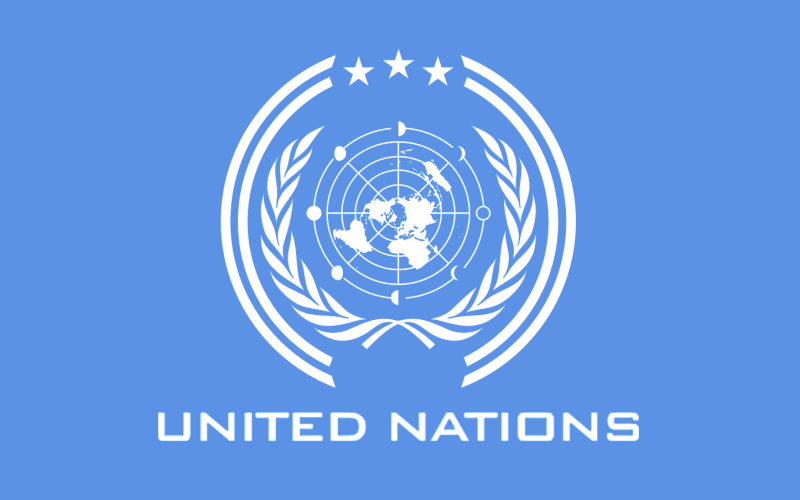The Changing Context of United Nations Climate Negotiations

By Philip Emmi.
It is increasingly clear that we have gotten off on the wrong foot when addressing climate change. It can not be primarily a matter of nation-state cooperation on international policy, as once thought. Rather, addressing climate change requires a multi-pronged approach including attention to climate science, finance, investment, litigation, and leadership.
The two-week long 24th Conference of Parties to the United Nations Framework Convention on Climate Change (UNFCCC, COP24) wound down in Katovice, Poland, this December 15, 2018. Its challenge was to draft a rulebook for regulating implementation of the much applauded 2015 Paris Agreement on Climate Change of COP21. Effective rules and regulations for implementing the Paris Agreement are essential for its success and, presumably, the success of future forms of civilization.
This recent event presents an occasion to briefly highlight strategic developments in addressing climate change, developments that are changing the context of UN-sponsored climate negotiations. These include developments in climate science, climate finance, climate investment, climate litigation and climate leadership. Each of these deserves closer attention.
Climate Science: In preparation for COP24, the International Panel on Climate Change (IPCC) produced a Special Report: Global Warming of 1.5°C. It projected a global mean temperature increase of 1.5°C sometime between 2030 and 2052 depending largely upon public and private policy choices. However, its most urgent message addressed the differences between a 1.5°C and a 2.0°C world. While noting regional variability, it delineated differences in risk concerning crop yields, coastal flooding, fluvial flooding, species extinction, ecosystem degradation, ocean acidity, commercial fisheries, Arctic Ocean sea ice, food security, poverty, welfare and limitations on adaptive capacity. Strikingly, it found that the risks in a 2°C world were typically two or more times those of a 1.5° world. These findings were a surprise to many and lent further urgency and ambition to the COP24 negotiations.
Climate Finance: All agree that achieving the Paris Agreement goal of a 1.5°-to-2.0°C world will require massive amounts of support for developing country energy and economic transformation. (A 2018 IPCC report shows that $1.6-3.8 trillion in energy system investments alone will be required to keep us within a 1.5° world.) There is a general recognition of the obligations for climate finance among developed countries as well as the opportunities for climate-related projects in developing countries. Accordingly, negotiators in Paris agreed to have developed countries contribute $100 billion per year between 2020 and 2025 to help finance climate-related projects in developing countries. The success of the Paris Agreement hinges upon mobilizing these agree upon transfers. But several developed country negotiators proved recalcitrant. So the negotiated text now leaves open the possibility of “dodgy accounting practices, as countries count all sorts of dubious things as climate finance, taking advantage of vague definitions and a general lack of accounting rules” (Brandon Wu, 12/17/2018). Regrettably this failure puts the entire Paris Agreement at risk. The negotiated text will be reconsidered next year during COP25. Anything to bring about less “dodgy” commitments to climate finance is most certainly in order.
Climate Investment: Institutional investors are in a position to rectify current conditions regarding climate-related financial risks. They have the clout and organizational capacity to do so, and they have already been effective. Climate Action 100+ is an important example. It is a confederation of 415 institutional investors managing assets of over $32 trillion. And it is targeting the world’s largest emitters and asking them to shape up. Climate Action 100+ recently issued the 2018 Global Investor Statement to Governments on Climate Change. It calls for governments to advance Paris Agreement climate goals, to accelerate private climate-related investments and to adopt standards to improve climate-risk-related financial reporting. The subtext to the corporate world is straightforward: “We’re worried about the climate-related risks of our assets and, unless you shape up, we’ll move our money to less risky investments.”
Their effectiveness is exemplified by the Joint Statement between Royal Dutch Shell and members of Climate Action 100+ issued on December 3, 2018. It identifies Shell’s new net emission reduction goals linked to revised remuneration policies with annual updates on progress denoted by specific measurements following guidelines from the organization’s Task Force on Climate-Related Financial Disclosure. The agreement is remarkably comprehensive. It promises to be a model for negotiations with other major oil companies.
Climate Litigation: There are many forms of climate litigation. But let us simply focus on the most general form, namely litigation that seeks to establish the right to a life-sustaining climate and define the government’s obligation to secure the same. Such cases have been launched in Ireland, New Zealand, Switzerland, Belgium, India, Norway, Pakistan, Columbia, the Netherlands and the USA. Of these the Dutch and American cases are among the earliest and most advanced. The Dutch case is on appeal to their Supreme Court. The Supreme Court Advocate General, Jaap Spier, argues that, “Courts can force countries to adopt effective climate policies. Court cases are perhaps the only way to break through the political apathy about climate change.” The Urgenda Foundation, having recently won in two lower courts, must now argue again before the Dutch Supreme Court. A decision is expected soon.
Meanwhile, with the support of Our Children’s Trust, Juliana v United States is being advanced by 21 young people and James Hansen, renowned climate scientist. Judge Ann Aiken of the Federal District Court of Oregon has already held that “the right to a climate system capable of sustaining human life is fundamental to a free and ordered society.” The Ninth Circuit Court of Appeals has lifted a stay of trial pending an accelerated interlocutory appeal by the defendant. But the all-important processes of discovery and pre-trial preparations are now under way. Look for news about the trial by February 2019.
Climate Leadership: Being undertaken by the United Nations, the United Nations Framework Convention on Climate Change quite naturally assumed that nation states would serve as critical change agents. It is increasingly clear that this assumption is grounded in a misunderstanding of how social change happens. Instead there is growing recognition of the critical participation of bottom-up non-governmental organizations, of middle-out municipal, county and provincial governments and of national and international business associations. A few examples are in order.
ICLEI is a transnational network of local governments committed to a sustainable future. Its campaign, Cities for Climate Protection, aggregates local governmental commitments toward greenhouse gas emission reductions. C40 is a global network of 96 megacities (representing 25% of global GDP) working to address climate change. Climate Alliance is a network of 1,700 local governments and non-governmental organizations pursuing local action for global climate change. Energy Cities is a campaign securing signatures in over 1,000 cities in 30 countries to the Covenant of Mayor for Climate and Energy.
We Mean Business is a coalition of business organizations helping to catalyze business leadership to accelerate transition to a low carbon economy. The World Business Council for Sustainable Development is a global CEO-led organization of over 200 businesses working together toward a sustainable world. CDP is a nonprofit running a global platform for environmental disclosure intended to focus investors, companies and cities on actions taken to build a sustainable economy. The Climate Group is a nonprofit bringing together networks of businesses and governments to shift markets and policies toward the more ambitions Paris Agreement goals. We-Are-Still-In is a collaboration of 3,500 organization representing the US at COP24 and promising to meet US emission reductions goals in lieu of elapsed federal commitments, in effect, rebutting the present regime.
Interfaith Power and Light offers a religious response to global warming. The Climate Initiative of the Parliament of World Religions supports action on behalf of indigenous populations, endangered forest and climate change policies. The Interfaith Center for Corporate Responsibility highlights approaches to ethical investing. The Alliance of Religions and Conservation helps the world’s major religions develop environmental programs based on their own core teachings, beliefs and practices. The Quaker United Nations Office works with people in the United Nations and it member organizations to provide opportunities for quiet diplomacy by opening a space of mutuality among potentially contentious parties. And with increasing organizational effectiveness, indigenous communities are bringing traditional knowledge systems to bear on questions of climate change.
The leadership initiatives shown by this wide array of actors is inspiring. They demonstrate a variety of ways to take up the challenge and the utter importance of doing so. They help us understand that our path forward is not essentially defined by the policies of nation states, either individually or collectively. Rather they prompt a broader recognition that climate change is a matter for everyday practice, local community action, progressive litigation, corporate responsibility, policy-relevant science, indigenous knowledge, ethical judgement, empathic world views and faith communities willing, as William Penn said, to see in the world “the Great Creator stare them in the Face, in all and every Part thereof.”

